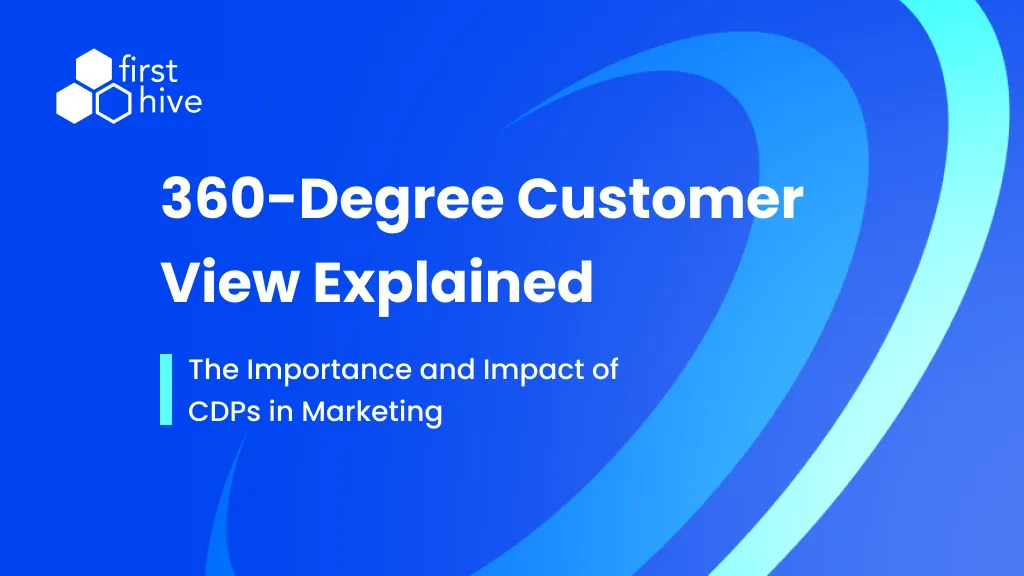In today’s hyper-competitive market, staying ahead means anticipating your customers’ needs before they even express them. Predictive analytics, powered by a robust Customer Data Platform (CDP), allows marketers to do just that. This guide will walk you through the power of CDP-powered predictive analytics and provide actionable steps to integrate this powerful tool into your marketing strategy.
What is a 360-Degree Customer View?
Definition and Concept
A 360-degree customer view is an aggregated, holistic representation of customer data across all touchpoints and interactions with your brand. It includes demographic information, transaction history, behavior, preferences, and all past interactions. This comprehensive perspective allows businesses to understand their customers on a deeper level.
Benefits of a 360-Degree Customer View
- Enhanced Customer Understanding: By integrating data from various sources, businesses gain a nuanced understanding of customer needs and behaviors, leading to more effective marketing strategies.
- Personalized Marketing: With detailed insights, companies can create highly personalized marketing campaigns that resonate more with their audience, increasing engagement and conversion rates.
- Improved Customer Service: A 360-degree view enables customer service teams to provide more informed and personalized support, improving customer satisfaction and loyalty.
- Increased Customer Loyalty: By understanding and anticipating customer needs, businesses can build stronger, more meaningful relationships, fostering long-term loyalty.
The Role of Technology in Achieving a 360-Degree Customer View
Introduction to Customer Data Platforms (CDPs)
Definition: A Customer Data Platform (CDP) is a sophisticated data management system that collects, integrates, and unifies customer data from multiple sources into a single, centralized database. This unified customer view allows businesses to better understand and engage with their customers.
Core Functions: Key features of CDPs include data integration, unification, and activation.
CDP vs. Other Martech Solutions: Unlike CRMs, DMPs, and marketing automation tools, CDPs provide a more comprehensive and unified customer view, integrating data from various touchpoints and updating profiles in real-time.
How CDPs Enable a 360-Degree Customer View
Data Integration: CDPs integrate data from various sources, including online (websites, social media) and offline (in-store purchases, customer service interactions), ensuring a complete picture of each customer.
Real-Time Data Processing: CDPs ensure that customer profiles are continuously updated with real-time data, providing the most accurate and current insights.
Comprehensive Customer Profiles: By enriching data and maintaining accuracy, CDPs build detailed and reliable customer profiles, which are essential for personalized marketing.
Data Activation: CDPs enable businesses to use unified data for targeted marketing campaigns and personalized customer engagement, driving better results.
Differentiating CDPs from Other Martech Solutions
CDPs vs. CRMs
Scope of Data: CDPs handle more comprehensive data than CRMs, including behavioral, transactional, and interaction data.
Data Integration: While CRMs focus on transactional data and customer relationship management, CDPs integrate data from multiple touchpoints to create a holistic customer view.
Customer Profiles: CDPs create dynamic and detailed profiles, whereas CRMs often have more static and limited customer records.
CDPs vs. DMPs
Data Types: DMPs primarily handle anonymous data for advertising, while CDPs work with known customer data to provide personalized marketing.
Purpose: DMPs are used for targeted advertising, whereas CDPs are used for personalized marketing across channels, enhancing overall customer engagement.
Customer Profiles: CDPs provide a unified, individual-level customer view, unlike the segment-level view from DMPs.
CDPs vs. Marketing Automation Tools
Data Unification: Marketing automation tools often lack the capability to unify data from disparate sources, which CDPs excel at.
Real-Time Processing: CDPs offer real-time updates, enhancing the relevance of customer interactions.
Personalization: CDPs provide deeper insights for more granular personalization compared to automation tools.
Implementing a CDP to Achieve a 360-Degree Customer View
Steps to Implement a CDP
Needs Assessment: Evaluate your business needs and goals. Determine what data you need to collect and how a CDP can help you achieve your objectives.
Vendor Selection: Choose a CDP that fits your requirements. Look for features such as data integration capabilities, scalability, and user-friendly interfaces.
Data Integration: Plan and execute the integration of various data sources. Ensure that your CDP can seamlessly integrate with your existing systems, such as CRM, social media, and web analytics tools.
Profile Building: Develop comprehensive customer profiles using the CDP. Use data enrichment techniques to add additional data points and ensure accuracy and consistency.
Data Activation: Use the insights gained for targeted marketing and improved customer engagement. Implement predictive models and personalized marketing campaigns based on the unified customer data.
Best Practices for Success
Data Quality: Ensure the accuracy and consistency of data by regularly updating and cleansing your data.
Privacy Compliance: Adhere to data privacy regulations such as GDPR and CCPA to protect customer data and maintain trust.
Continuous Improvement: Regularly update and refine customer profiles and marketing strategies based on new data and insights.
The AMC had significant marketing spends and had employed a host of marketing tools and channels that included operational and optimizational tools across 16 channels. However, they did not get a Single Customer View (SCV) at a brand level and were forced to employ local optimization techniques by channel which resulted in sub optimal customer experience delivery.
Results Achieved: FirstHive helped us unlock 5X additional pseudonymous profiles from our web interactions and social data.
Conclusion
A 360-degree customer view, powered by a robust CDP, can revolutionize your marketing efforts by providing deep customer insights and enabling personalized engagement. By following the steps outlined in this guide, you can harness the power of predictive analytics to drive your marketing strategy forward. Start leveraging your customer data today and see the transformative impact on your business.








